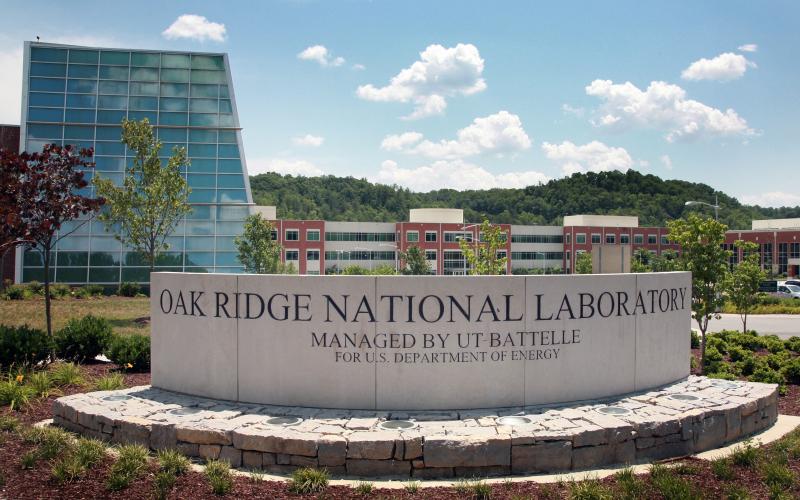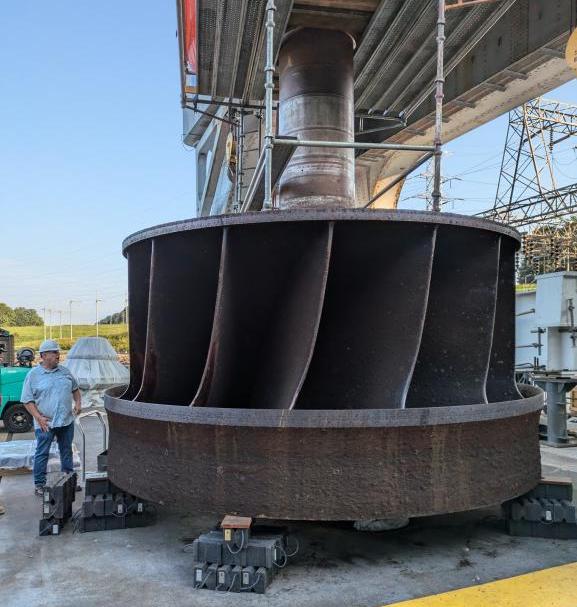The US Department of Energy (DOE)’s Oak Ridge National Laboratory (ORNL) is leading a new initiative to 3D print large metal runners used in dams for hydropower generation. These rotating components convert the movement of water into electricity.
Called Rapid Research on Universal Near Net Shape Fabrication Strategies for Expedited Runner Systems, or Rapid RUNNERS, the project will receive $15 million from the DOE over three years.
ORNL hopes this will revitalize American manufacturing and return clean energy production to the United States. According to Oak Ridge, additive manufacturing could significantly reduce lead times for critical runner parts and accelerate economic growth in the energy manufacturing sector.
The production process will use robotic welders to deposit metal layer by layer to form the runners, all of which will be produced in the US.
The program also covers the development of the software, hardware, robotics and manufacturing strategies needed to produce the large-format components. Several organizations, including the Tennessee Valley Authority (TVA), are working with ORNL to achieve this.
“This has the potential to transform forging and casting of large-scale metal components,” commented Adam Stevens, an R&D staff member at ORNL and technical lead for the project.

ORNL to 3D print hydropower turbine components in the US
Hydropower turbines are almost exclusively manufactured outside the United States. The components possess complex designs and are difficult to produce, usually requiring months of manual welding and finishing. As such, it can take years to replace these components when they fail, significantly stunting renewable energy generation.
“Right now, it takes around 18 months to produce one of these,” explained Stevens. “That’s 18 months of clean energy you’re not generating.” He believes the ORNL’s new initiative could fill a notable gap in America’s domestic industrial base.
Additive manufatcring can more quickly fabricate the runners close to the desired dimensions, or “near-net-shape.” These can then be machined to produce the final product, reducing waste and downtime compared to conventional production processes.
Brian Post, leader of ORNL’s Disruptive Manufacturing Systems Development group, and Jay Tiley, head of the lab’s Materials Structures and Processing Section, are the project’s principal investigators for systems and materials, respectively.
The ORNL’s Manufacturing Demonstration Facility (MDF) is providing resources and expertise for the initiative. Supported by the DOE’s Advanced Materials and Manufacturing Technologies Office, the MDF is the hub for a nationwide consortium working with ORNL to transform US manufacturing.

The Rapid RUNNERS project
Rapid RUNNERS will produce three Francis runners to demonstrate the capabilities of additive manufacturing. This particular style of stainless steel turbine is often used in dams to generate hydroelectric power.
The team will first fabricate a prototype runner for testing. This will be followed by a 5-foot-diameter runner which could potentially be installed in the TVA’s Ocoee Dam in Parksville, Tennessee. This 840-foot-wide, 135-foot-tall hydropower dam spans the Ocoee River and features five generating units that produce 24 megawatts of electricity.
A third Francis runner will be 3D printed for the TVA’s Wilson Dam, which features 21 generating units producing 653 megawatts of electricity. Weighing 46 tons, this turbine will be 15 feet in diameter and 8 feet tall.
“This program offers an innovative way for us to fulfill TVA’s mission summarized by three ‘E’s: for Energy, it improves reliability, for the Environment, it maximizes renewable energy produced, and for Economic development, it brings great jobs back to the US,” commented Joe Hoagland, TVA’s vice president of innovation and research.
Manufacturing software will play a key role in achieving these goals by controlling the robots and optimizing the additive manufacturing process. The production system is expected to incorporate individual robots assigned to tasks, such as wire arc welding, grinding, metrology, and other necessary functions. Six or more robots could converge on the system at the same time.
In the future, the TVA expects that many of its turbines and 410 stainless steel components will be 3D printed domestically. Producing these parts with additive manufacturing would reportedly unlock unique capabilities.
Curt Jawdy, head of R&D at TVA, explained that hydro runners have cavitation-prone areas. These can fail due to the erosion of the vane surfaces under the cumulative force of collapsing air bubbles. Additive manufacturing can be used to apply a cavitation-resistant coating to these surfaces. “You can do things with additive manufacturing that you can’t do otherwise. There are shapes you can make that you would not be able to make otherwise, and you can combine materials,” added Jawdy.
By the end of the three-year project, the team hopes to have created a new distributed hybrid- manufacturing platform that could be used by different industries. Stevens believes this would enable the domestic production of large-scale components for energy, defense, shipbuilding, hydropower and municipal water supply applications.
“Any industry that requires a large piece of metal could benefit from this,” he added. “This will increase worker productivity and provide a healthier domestic industrial base.”
Besides the TVA, several organizations have partnered with the ORNL for the programme. These include Huntington Ingalls-Newport News Shipbuilding, where the largest Francis runner will be 3D-printed; the Electric Power Research Institute, providing techno-economic analyses; Open Mind Technologies, assisting manufacturing strategy development; ARC Specialities, providing robotic hardware and integration; and Voith Group-Hydropower, a hydro unit manufacturer.
Take 10 seconds to tell us the impact of this news using the block below. Make sure you click submit!
3D printing optimizes energy manufacturing
ORNL’s adoption of additive manufacturing is part of a growing trend of 3D printer adoption within the energy sector.
Earlier this year, Saudi Arabia-based 3D printing service provider National Additive Manufacturing & Innovation (NAMI) purchased 3D printers from 3D Systems to produce parts for the Saudi Electricity Company (SEC).
NAMI, a private joint venture between 3D Systems and Saudi Arabian Industrial Investments Company Dussur, hopes its new 3D printers will create an efficient, localized energy supply chain in the region.
The SEC is the largest electrical energy producer, transmitter, and distributor in the Middle East and North Africa. The partnership will also see NAMI create a digital inventory of parts to streamline production, reducing physical storage requirements, and costs.
Elsewhere, US-based natural gas service provider Upwing Energy is leveraging large-format metal 3D printers from Velo3D to fabricate its Subsurface Compressor System (SCS) gas compressor module.
By adopting Velo3D’s Laser Powder Bed Fusion (LPBF) 3D printer, Upwing has reportedly reduced the manufacturing time needed to support its SCS gas well deployment schedules. Additive manufacturing has allowed it to go from engineering design to full compressor rotor assembly production in just 10 weeks.
Nominations are now open for the 2024 3D Printing Industry Awards.
What does the future of 3D printing hold?
What near-term 3D printing trends have been highlighted by industry experts?
Subscribe to the 3D Printing Industry newsletter to keep up with the latest 3D printing news.
You can also follow us on Twitter, like our Facebook page, and subscribe to the 3D Printing Industry Youtube channel to access more exclusive content.
Featured image shows ORNL’s Jay Tiley inspecting a hydroelectric runner from TVA’s Cherokee Dam. Photo via Jim Tobin/ORNL, US Dept. of Energy.


